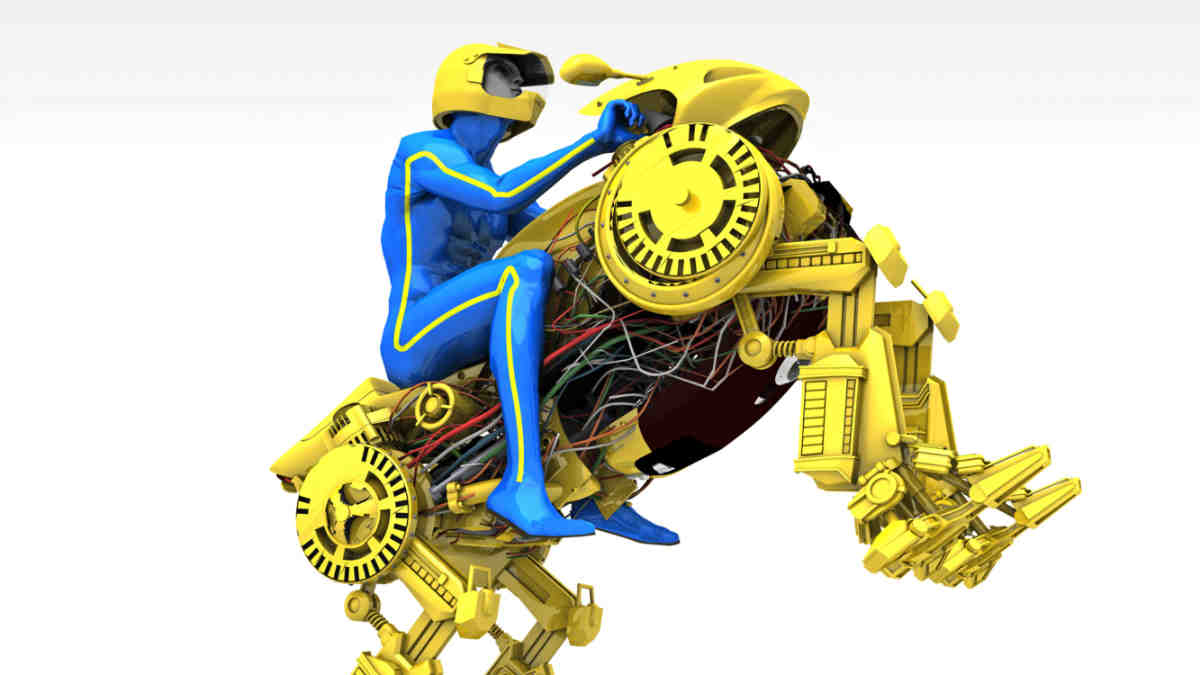Hot Money Monday: Nvidia declares multi-trillion-dollar bet on AI and robotics – who’s in for the ride?

Nvidia bets big on AI and robotics future. Pic: Getty Images
- Nvidia bets big on AI and robotics future
- Jensen Huang talks about a “multi-trillion-dollar” opportunity
- GeForce 50 series and Project Digits also unveiled
Jensen Huang, Nvidia’s founder and CEO, made his long-awaited keynote at the packed Consumer Electronics Show (CES) event in Las Vegas last Tuesday.
For those who don’t know, CES is the biggest tech show of the year—basically where the future of gadgets, AI, robotics and everything in between is on display.
If you didn’t catch it, you missed a pretty bold pitch from Huang.
Huang didn’t just show up to show off Nvidia’s latest products; he came with a vision—a big one.
The ambition? To tap into a “multi-trillion-dollar” opportunity, and he’s betting Nvidia’s going to be at the heart of it.
“The ChatGPT moment for general robotics is just around the corner,” Huang declared, referring to the 2022 launch of ChatGPT which ignited global fascination with AI.
But not everything he said at CES set the market on fire. In fact, after the event, Nvidia’s stock dropped 6%, marking its biggest dip in months.
Investors were probably hoping for more short-term action, but Huang’s speech focused on the future.
Sure, there was some near-term excitement—like the new GeForce 50 series for gamers and updates on Nvidia’s self-driving car tech.
But the real message was that Nvidia’s positioning itself for something far bigger.
Next-level power
Speaking in almost poetic tones, Huang introduced the concept of “tokens” as the building blocks of an extraordinary world.
“Tokens have opened a new frontier,” he said, “the first step into an extraordinary world where endless possibilities are born.”
Sounds grand but as he continued, it was clear that it’s more than just hype.
Nvidia has a real vision to position itself as the engine driving AI—from images and videos, to robots and self-driving cars.
The crowd was hooked as he dropped specs for Nvidia’s new RTX Blackwell GPUs: 4000 AI TOPS, 380 ray-tracing teraflops, 92 billion transistors.
Way over my head, but apparently, this is next-level power.
Huang introduced a concept called “test time scaling”—think of it as giving AI a turbo boost to handle real-time tasks with multiple systems working together.
He’s betting that as costs drop, this kind of AI will only get faster and more powerful.
“We’re on the cusp of physical AI,” he said.
Big bet on AI and robotics
Huang then spent the bulk of his speech showcasing how Nvidia is expanding into industries where it’s just starting to scratch the surface.
The company wants to power a world with billion humanoid robots, millions of automated factories and billions of self-driving cars.
You can see now where the “multi-trillion-dollar” tag comes from.
He talked about a complete transformation of industries, from manufacturing to transportation, and Nvidia’s role in making that happen.
And it’s not just talk. Huang has locked in real deals to back those claims.
Toyota, for example, is already using Nvidia’s self-driving tech, and Uber’s signing up to power AI for the autonomous revolution. The game’s on.
“The autonomous driving technologies alone will likely be the first multi-trillion-dollar robotics industry,” Huang said.
Data centres and gaming
Meanwhile, one of the big shifts Nvidia’s gone through recently is how its business is changing.
Not too long ago, gaming was the bread and butter of the company’s revenue.
But now, Nvidia’s data centre unit is leading the charge. This part of the business has overtaken gaming in size, and is on track to rake in more than US$100 billion this year.
Nvidia hasn’t forgotten its roots, though.
In fact, the company is doubling down on gaming with new GeForce 50 series graphics cards, which were showcased at the event.
These GPUs are supercharging gameplay with AI, predicting frames and cranking up realism, speed, and basically just pure awesomeness.
“GeForce allowed AI to reach the masses, and now AI is coming home to GeForce,” said Huang.
And then there’s Project Digits.
Nvidia’s new US$3000 desktop isn’t your average PC.
It’s a beast, powered by the Grace Blackwell Superchip, built for AI developers who need to run heavy models locally, no cloud needed.
So… the overall message was, if you can look past the near-term dips and think longer term, Nvidia might just be a stock worth watching as it looks to shape the future.
The question is: Can it stay ahead of the game, or will the competition catch up and steal its thunder?
This story does not constitute financial product advice. You should consider obtaining independent advice before making any financial decision.
Related Topics
UNLOCK INSIGHTS
Discover the untold stories of emerging ASX stocks.
Daily news and expert analysis, it's free to subscribe.
By proceeding, you confirm you understand that we handle personal information in accordance with our Privacy Policy.








